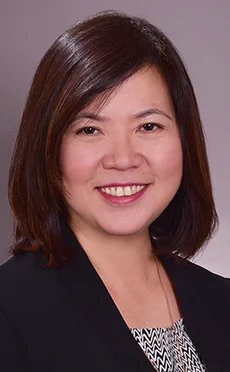
Equity derivatives house of the year: UBS
Asia Risk Awards 2017

UBS’s equities business has tapped into clients’ mounting concerns over the impact of US rate increases on their investment, and boosted its Asian risk recycling capabilities in the region over the past 12 months.
The Zurich-based bank’s wealth management market share and its relationship with asset managers and hedge funds has been the key differentiator, leading it to win the Equity Derivatives House award for an unprecedented third year in a row.
One example of UBS’s capability in risk recycling is where it matches the request from a wealth management client to sell volatility on a certain name with the appetite for a client on the warrants desk to buy that name. This intelligent recycling of risk has allowed UBS to significantly increase structured flow issuance, leading to the introduction of new structures such as corridor variance swaps.
Collaboration with the bank’s cash desk has also been key to the risk recycling, as it allows UBS to lend stock through its cash franchise. The model has been so successful this year that the lender’s equity derivatives business has already made five significant hires in the region and plans to double its headcount in China by 2020. UBS currently has a 66-strong structuring and quants team in Shanghai.
“Three streams of efforts have helped and will continue to differentiate our franchise,” says Vikesh Kotecha, head of equity derivatives for Asia. “First, our risk profiles – our ability to recycle our exotics risk through our diverse client franchise – has seen us become the top provider in exotics and light exotics. Second, our focus on enhancing our technology platform has seen great strides in servicing our retail and private banking clients, as well optimising our warrants risk engine. Finally, we have been working with clients on structures such as AMCs [Actively Managed Certificates] and investment strategies, which in complement to our successful Risk Premia conference last month, will lead to more key transactions in the coming months and years.”
Kotecha is among UBS’s key hires for the business in the region. He joined in April from Barclays, where he had spent more than six years.
The importance of recycling at UBS has risen so much that the bank is diversifying out to other products over the course of next year.
A large part of the risk recycling business this year has been in relation to fund-linked derivatives. The products have become popular in the region as investors fret over the effects of the US Federal Reserve’s tightening of monetary policy. The Fed has set October for the start of its previously announced plan to shrink its $4.5 trillion balance sheet, and this month stuck with its forecast to raise interest rates again this year.

“Clients throughout the region enjoyed good performance on certain fixed-income funds,” says Nicole Tan, head of South-east Asia, Hong Kong and Taiwan structured solutions sales. “However, while clients wanted to maintain the upside, they also sought to reduce their overall exposure. With our partners in wealth management, we have designed structures that provide a multiplier to the upside and, at the same time, protect the downside. This was made possible largely due to the low volatility of the fund. The product was extremely popular across the region.”
UBS recycled vega from several hedge funds through products such as volatility swaps. By hedging out the risk in this way, it has managed to increase its business with wealth management and private banking clients. It sources the trade through its wealth management unit and then recycles it through products to hedge funds.
“You can only recycle if you have a client base, otherwise you have nothing to recycle, so our ability to source the trade, put the risks we want on the book and recycle the rest of it out not just in the funds space but across all the books has really helped our business,” says Kotecha.
Under the trade proposed by UBS, clients can give up their position and buy a call option on the fund with principal protection and multiply performance.
UBS is also building up its capacity to recycle risk from more complex exotics such as corridor variance, which gives clients a cheaper option to purchase volatility and reduces the reliance on bull markets. This effort is being led by new hire Stephane Petermann, who joined the bank to run Apac equity derivatives trading after moving from Societe Generale earlier this year.
Technology has come in handy as well, as the bank expands its risk recycling business. UBS has been able to facilitate flow as a result of its ability to manage new payoffs quickly and complete all the downstream on the same day.
Also, as clients began looking for shorter-dated investments, the bank has been able to leverage its technology infrastructure. AMCs allow a portfolio manager to outsource the operational burden of running an investment strategy to UBS and focus on the investment decision-making process while allowing for flexibility within the investment.
UBS issues AMCs linked to a reference portfolio that can consist of many instruments from multiple asset classes but can be offered in other formats to meet the requirements of the client.
Clients highlight UBS’s auto-call business as another example of the bank’s competitive edge. In Korea, where the products are particularly popular, they use Eurostoxx, Kospi or Nikkei underlyings.
“They are giving me a good price for the auto-call products. This means the yield and the coupon is high and the price is low compared to other investment banks,” says the head of derivatives at one asset manager in the country.
Increased business has meant UBS has added directors, products and boosted its cross-border trading abilities. It has two Asia-based traders in Europe and the team is currently relocating a trader to sit in Asia and price and trade on behalf of its European desk.
With high-net-worth Asian investors looking for new ways to invest capital, UBS has developed its performance-linked notes (PLNs), allowing clients to access companies preparing for a public float as part of a balanced portfolio. The bank issues a note linked to the performance of private underlying assets, which is then distributed to wealth management clients in the region.
“Our PLN business has completed multiple transactions in the region. UBS differentiates itself through the close collaboration between its business divisions – and this is a prime example,” says Kotecha.
The process requires a number of elements to successfully manage the market and sell the product: access to the so-called ‘unicorn’ company; a sophisticated client base that understands the risk and rewards of the structure; and the ability to carry out sufficient due diligence on the pre-IPO company.
The bank also offers bespoke solutions on the product, and has the ability to create special purpose vehicles to isolate UBS’s credit risk from the client and wrap the fund around the performance of the SPV.
“You must have a best in class business, and this is part and parcel of the corporate derivatives platform we have already,” says Kotecha.
The regional success extends all the way to Australia in the region. UBS had a strong first half of the year in the South-Pacific nation, largely because of healthy appetite for its principal loan and collar structure. The product provides protection for investors worried about ongoing geo-political uncertainties, while allowing them exposure to the market via equities. The bank has an exotic trade and flow in Sydney that many of its global competitors are unable to offer.
The bank’s reputation in the Australian market is demonstrated by the fact it works with the four private banks based in Australia, after ANZ private bank signed up earlier in the year to bank with UBS.
Only users who have a paid subscription or are part of a corporate subscription are able to print or copy content.
To access these options, along with all other subscription benefits, please contact info@risk.net or view our subscription options here: http://subscriptions.risk.net/subscribe
You are currently unable to print this content. Please contact info@risk.net to find out more.
You are currently unable to copy this content. Please contact info@risk.net to find out more.
Copyright Infopro Digital Limited. All rights reserved.
As outlined in our terms and conditions, https://www.infopro-digital.com/terms-and-conditions/subscriptions/ (point 2.4), printing is limited to a single copy.
If you would like to purchase additional rights please email info@risk.net
Copyright Infopro Digital Limited. All rights reserved.
You may share this content using our article tools. As outlined in our terms and conditions, https://www.infopro-digital.com/terms-and-conditions/subscriptions/ (clause 2.4), an Authorised User may only make one copy of the materials for their own personal use. You must also comply with the restrictions in clause 2.5.
If you would like to purchase additional rights please email info@risk.net
More on Awards
Collateral management and optimisation product of the year: LSEG Post Trade
LSEG Post Trade wins Collateral management and optimisation product of the year for interconnected services that help mitigate counterparty risk and optimise capital usage
Clearing house of the year: LCH
Risk Awards 2025: LCH outshines rivals in its commitment to innovation and co-operation with clearing members
Driving innovation in risk management and technology
ActiveViam secured three major wins at the Risk Markets Technology Awards 2025 through its commitment to innovation in risk management and technology
Regulatory reporting product of the year: Regnology
Regnology retains its award for Regulatory reporting product of the year at this year’s Risk Markets Technology Awards.
Electronic trading support product of the year: TransFICC
TransFICC’s One API and automation solutions earned the Electronic trading support product of the year award by tackling fragmentation and streamlining workflows in fixed income and derivatives markets
Market data vendor of the year: S&P Global Market Intelligence
S&P Global Market Intelligence wins Market data vendor of the year for its comprehensive data solutions and tools supporting trading, risk management and compliance
Best use of machine learning/AI: CompatibL
CompatibL’s groundbreaking use of LLMs for automated trade entry earned the Best use of machine learning/AI award at the 2025 Risk Markets Technology Awards, redefining speed and reliability in what-if analytics
Clearing house support product of the year: FIA Tech
FIA Tech won Clearing house support product of the year for its TDN solution, which streamlines post-trade processing in ETDs by increasing efficiency, reducing risk and enhancing transparency







